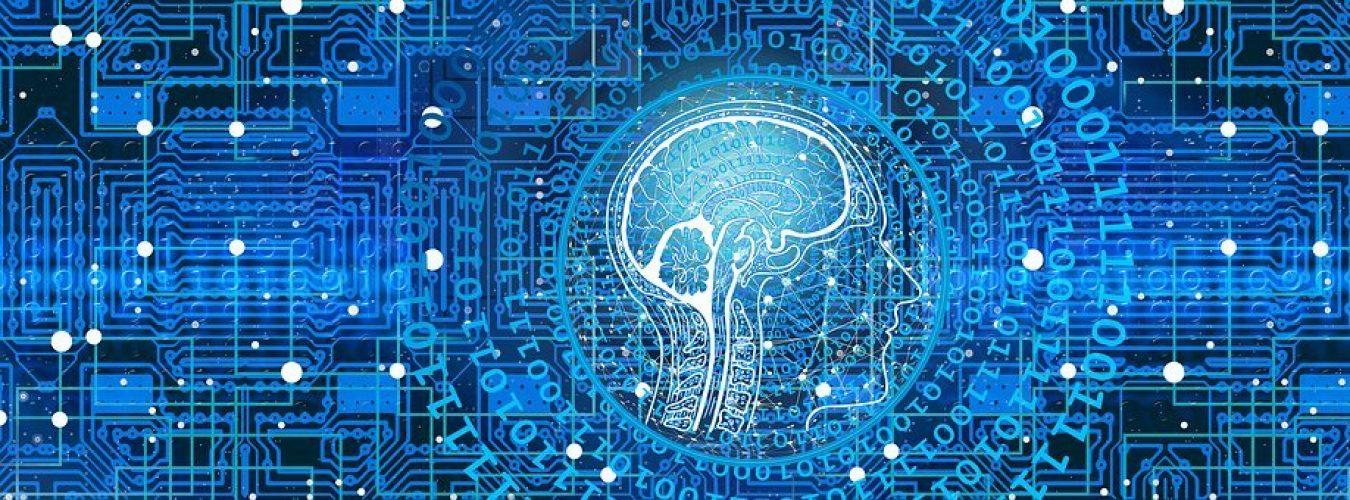Slavery is not History, it is happening right now!
Human trafficking, a heinous crime plaguing societies worldwide, encompasses the illegal transportation of individuals through coercion or deceit for purposes such as labor exploitation, sexual servitude, or other activities that financially benefit traffickers. Let’s explore various types of human trafficking, examine the legal frameworks established to combat it, and discuss actionable steps we can take to address this pressing issue.

Understanding the Types of Human Trafficking:
Human Trafficking:
Human trafficking is a sinister practice involving the abduction or deceitful recruitment of individuals, often from vulnerable backgrounds, to exploit them for labor or sexual purposes. For instance, imagine a scenario where a young woman from a poverty-stricken community is promised a lucrative job opportunity abroad but finds herself trapped in a foreign land, forced into prostitution against her will.
Sex Trafficking:
Sex trafficking specifically targets victims for sexual exploitation. Consider the plight of a teenage girl coerced into a life of exploitation, enduring physical and psychological abuse in a dark and squalid brothel, where she is compelled to satisfy the desires of countless clients.
Labor Trafficking:
Labor trafficking entails the exploitation of individuals for forced labor, typically in industries such as agriculture, construction, or domestic work. Picture a group of migrant workers, enticed by promises of decent wages, only to discover themselves toiling in harsh conditions without pay, their passports confiscated, and any attempt to escape met with violence.
Forced Criminal Activity:
Traffickers may compel their victims to engage in criminal activities, such as drug trafficking or theft, under threat of harm. Visualize a young man, desperate and vulnerable, coerced into smuggling drugs across borders, his every move dictated by fear and coercion.
Familial Child Trafficking:
In familial child trafficking, parents or guardians exploit their own children for labor or sexual exploitation. Envision a heart-wrenching scenario where a destitute parent, driven by desperation, sells their innocent child into servitude, depriving them of education and childhood joys.
Organ Trafficking:
Organ trafficking involves the illegal trade of organs, often extracted from vulnerable individuals. Imagine the horror of waking up in a dingy warehouse, groggy and in excruciating pain, to discover that one of your vital organs has been forcefully removed for profit.
Domestic Servitude:
Victims of domestic servitude are subjected to grueling hours of unpaid labor, enduring abuse and confinement within the confines of their oppressor’s home. Picture a live-in nanny, isolated and exploited by her employers, her dreams and aspirations stifled by the oppressive chains of servitude.
Forced Marriage:
Victims of forced marriage are coerced into unions against their will, often for financial gain or immigration purposes. Imagine the despair of a young woman, torn from her family and thrust into a loveless marriage, her autonomy and dignity stripped away by the dictates of others.
“Romeo” or “Lover Boy” Sex Trafficking:
In this insidious form of trafficking, perpetrators exploit romantic relationships to lure victims into sexual servitude. Envision a vulnerable girl, yearning for love and affection, ensnared by the false promises of a seemingly caring boyfriend, only to find herself trapped in a web of exploitation and abuse.
Transnational Routes and Recruitment:
Traffickers establish intricate networks for transporting victims across borders, often preying on vulnerable migrants seeking a better life. Picture shadowy figures lurking in the shadows, preying on the hopes and dreams of impoverished migrants, promising a better future but delivering only despair and exploitation.
The Case of Yeonmi Park
A horrific case of human trafficking involves Yeonmi Park, a North Korean defector and human rights activist. Yeonmi’s story provides a harrowing insight into the brutal realities of human trafficking and the resilience of survivors.
Yeonmi Park was born in North Korea in 1993, under the oppressive regime of Kim Jong-il. Growing up in extreme poverty and political repression, Yeonmi and her family faced constant hunger and hardship. In 2007, when Yeonmi was just 13 years old, her father was arrested and imprisoned for engaging in black market trading to provide for his family. This event marked the beginning of a nightmare for Yeonmi and her family. You can read more about Yeonmi on this Daily Wire article about here
Picture a young girl, born into the oppressive regime of North Korea, where hunger and fear are the constant companions of everyday life. Yeonmi’s childhood is a canvas painted with shades of despair, where the flicker of hope struggles to pierce through the darkness.
In 2007, the fragile threads holding Yeonmi’s family together begin to unravel when her father is unjustly imprisoned for seeking to provide for his loved ones. With the walls closing in around them, Yeonmi and her mother embark on a perilous journey across the border into China, seeking refuge from the suffocating grip of tyranny.
Desperate to escape the dire circumstances in North Korea, Yeonmi and her mother embarked on a perilous journey across the border into China in 2007. However, their escape did not bring them the freedom they longed for. Instead, they fell victim to human traffickers who preyed on vulnerable North Korean refugees.
Yeonmi and her mother were sold into human trafficking networks in China. They were separated and subjected to unimaginable horrors. Yeonmi was sold as a bride to a Chinese man, while her mother was trafficked into forced labor. Stripped of their dignity and basic rights, Yeonmi and her mother endured years of abuse and exploitation at the hands of their traffickers.
Despite the trauma and adversity they faced, Yeonmi and her mother managed to escape their captors and make their way to South Korea, where they sought asylum and safety. Yeonmi’s journey to freedom was fraught with danger and uncertainty, but her courage and resilience ultimately prevailed.
Since escaping North Korea and surviving human trafficking, Yeonmi Park has become a vocal advocate for human rights, particularly the rights of North Korean refugees and victims of human trafficking. She has shared her story on international platforms, including TED Talks and in her memoir, “In Order to Live: A North Korean Girl’s Journey to Freedom.”
Through unimaginable courage and unwavering determination, Yeonmi and her mother break free from the chains that bind them, embarking on a journey to reclaim their humanity and forge a path to freedom.
Today, Yeonmi stands as a beacon of hope, her voice echoing across the globe as she shines a light on the plight of those who remain trapped in the shadows of human trafficking. Her story is a testament to the resilience of the human spirit, a reminder that even in the darkest of times, there is always a glimmer of hope waiting to be ignited.
After reading Yeonmi’s story, the question remained for me, a UN member, what are the legal frameworks to fight against human trafficking and what can we do to help.
Legal Frameworks to Combat Human Trafficking:
The United Nations Convention against Transnational Organized Crime (UNTOC) serves as the primary international legal instrument in the fight against human trafficking. It was adopted by the United Nations General Assembly in 2000 and entered into force in 2003. One of the key protocols supplementing UNTOC is the Protocol to Prevent, Suppress, and Punish Trafficking in Persons, Especially Women and Children, often referred to as the Trafficking in Persons Protocol. This protocol specifically targets trafficking in persons and provides a comprehensive framework to prevent, suppress, and punish this crime.
The Trafficking in Persons Protocol outlines various obligations for member states, including:
- Prevention: Member states are required to take measures to prevent trafficking in persons, including through public awareness campaigns, strengthening border controls, and addressing the root causes of trafficking.
- Protection of Victims: States must ensure the protection of victims of trafficking, including providing them with access to necessary support services such as shelter, medical care, and legal assistance. Victims should not be penalized for their involvement in trafficking and should be provided with avenues for seeking redress and compensation.
- Prosecution of Traffickers: States are obligated to investigate, prosecute, and punish perpetrators of trafficking in persons. This includes enacting legislation criminalizing trafficking offenses and ensuring effective law enforcement measures to combat this crime.
- International Cooperation: The protocol emphasizes the importance of international cooperation in combating trafficking in persons. States are encouraged to cooperate with each other in investigations, extradition proceedings, and the repatriation of victims.
The Trafficking in Persons Protocol supplements UNTOC and should be interpreted and applied together with it. Additionally, the UN Office on Drugs and Crime (UNODC) plays a key role in providing technical assistance to member states in implementing these legal frameworks and supporting efforts to combat human trafficking globally.
Examples of UN Interventions in Combatting Human Trafficking:
The United Nations has been actively involved in addressing human trafficking in various countries around the world. Some examples of UN interventions include:
- Rescue and Rehabilitation Efforts: UN agencies, such as the UNODC and the International Organization for Migration (IOM), work with national governments and civil society organizations to rescue victims of trafficking and provide them with necessary support services, including shelter, medical care, and psycho-social support.
- Capacity Building and Training: The UN conducts capacity-building workshops and training sessions for law enforcement officials, prosecutors, judges, and other relevant stakeholders to enhance their skills and knowledge in combating human trafficking. This includes training on victim identification, investigation techniques, and prosecution strategies.
- Legislative Reform: The UN supports legislative reform efforts in countries to strengthen their legal frameworks against human trafficking. This may involve assisting governments in drafting and enacting new laws criminalizing trafficking offenses and ensuring the protection of victims’ rights.
- Public Awareness Campaigns: The UN collaborates with national governments and civil society organizations to raise public awareness about the dangers of human trafficking and the rights of victims. This includes campaigns targeting vulnerable populations, such as women and children, and highlighting the signs of trafficking and available support services.
These examples demonstrate the diverse range of interventions undertaken by the United Nations to combat human trafficking and support victims worldwide.
Actionable Steps for us privileged people
To combat human trafficking effectively, it’s essential to take proactive steps and be vigilant in our communities. Here are some actionable measures we can implement:
Learn the Signs:
Understanding the red flags of trafficking is crucial in identifying and responding to potential cases. Signs such as sudden isolation, restricted movement, unpaid wages, or visible fearfulness should raise concern. To enhance our awareness, attending training sessions or webinars focused on recognizing these signs in our community can be invaluable.
Report Suspicious Activity:
If you suspect human trafficking or encounter suspicious behavior, it’s vital to report it promptly to the appropriate authorities. Local law enforcement agencies or national hotlines, such as the National Human Trafficking Hotline, can offer assistance. Memorizing the hotline number (1-888-373-7888) ensures quick access to help when needed.
Advocate for Policy Changes:
Engaging with lawmakers and policymakers is crucial in driving meaningful change in anti-trafficking efforts. By advocating for stronger legislation and policies that prioritize the protection of victims and the prosecution of traffickers, we can contribute to creating a safer environment for vulnerable individuals.
Raising awareness
…about the realities of human trafficking is crucial in combatting this crime. By educating ourselves and others, sharing information through various platforms, and participating in awareness campaigns, we can shine a light on this dark reality and mobilize collective action against it.
Support anti-trafficking organizations and initiatives
This is another essential step in the fight against human trafficking. By contributing to NGOs and nonprofits working directly with survivors and advocating for policy changes, we can provide vital support to those affected by trafficking and work towards systemic change.
In conclusion, human trafficking is a grave violation of human rights that requires concerted efforts from individuals, communities, and governments to eradicate. By understanding the different types of trafficking, supporting legal frameworks, and taking proactive steps to combat this crime, we can work towards a world where every individual is free from exploitation and coercion.
Sources/References:
Conversation with Bing, 3/11/2024
(3) The International Legal Frameworks concerning Trafficking in Persons …. https://migrationnetwork.un.org/resources/international-legal-frameworks-concerning-trafficking-persons.
(4) The International Legal Framework on Human Trafficking. https://link.springer.com/chapter/10.1007/978-3-030-50849-4_2.
(2) Human Trafficking 101: Facts, Examples, Ways to Help. https://bing.com/search?q=definitions+examples+human+trafficking+21th+century.
(3) Human Trafficking 101: Facts, Examples, Ways to Help. https://www.humanrightscareers.com/issues/human-trafficking-101-facts-examples-ways-to-help/.
(4) The Crime: Defining Human Trafficking – United Nations Office on Drugs …. https://www.unodc.org/unodc/en/human-trafficking/crime.html.

